1. A Wall Decal with the Words “Live, Laugh, Love”
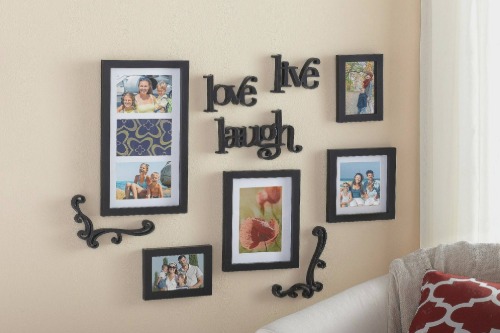
Ah, the ubiquitous “Live, Laugh, Love” wall decal — once the hallmark of anyone trying to inject both warmth and Target-level sophistication into their living space. These decals were often swirly-scripted, self-adhesive, and placed with intention above the couch or in the hallway. They were meant to remind visitors (and ourselves) that joy and gratitude were just a mindset away. Around 2005, they began exploding in popularity, especially after big-box craft stores like Michaels and Hobby Lobby made them widely available.
The trend tapped into a new era of DIY home décor where inspiration met mass production. People wanted to make their homes feel meaningful and inviting without hiring a designer. In practice, it became a visual cliché, but at the time, it felt like an accessible upgrade from bare walls. It was Instagrammable before Instagram — you just had to hope your guests got the message.
2. A Glass Bowl Full of Decorative Balls
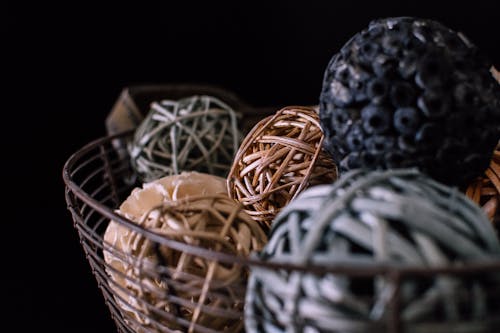
You know the one — a clear or bronze-tinted bowl on the coffee table, overflowing with orbs made of twigs, wicker, or mysterious smooth ceramics. These spheres didn’t do anything, but they absolutely screamed “I subscribe to Better Homes and Gardens and I am not afraid to show it.” The concept was rooted in texture and neutral palettes, which were huge in the early 2000s transitional style movement. This kind of filler décor was meant to elevate a space with minimal cost and maximum perceived effort.
Often found at Pier 1 Imports or HomeGoods, the decorative ball arrangement was the perfect conversation piece that didn’t actually require conversation. It signaled taste, trend-awareness, and just enough expendable income to waste on non-functional items. And there was something very 2005 about the idea that your living room needed a centrepiece — even if you lived in a two-bedroom apartment. This was interior design that aspired toward hotel-lobby chic, minus the concierge.
3. A Wrought-Iron Scrollwork Wall Hanging
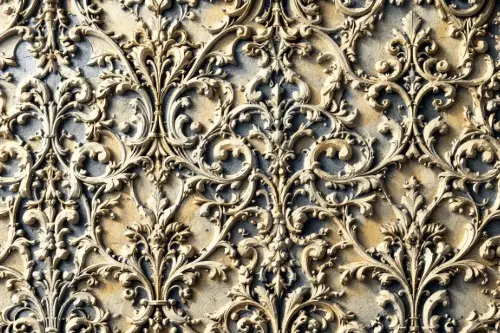
This ornamental metal art, usually a symmetrical tangle of faux-Mediterranean swirls, was a mid-2000s favorite for filling that big, awkward space above the fireplace. Often painted black or distressed bronze, it mimicked something you might see in a Tuscan villa (or at least a themed Cheesecake Factory). Retailers like Kirkland’s and World Market stocked these by the dozens, banking on the idea that nothing said “I have taste” like vaguely European ironwork. It was affordable, ornamental, and made homeowners feel like they were stepping up their design game.
Its popularity can be traced to the era’s fascination with Old World-inspired design — think warm tones, heavy drapes, and faux-fresco walls. If your home was your castle, then this was your heraldic crest. The scrollwork said you appreciated tradition, even if it came from a strip mall. It was aspirational, ornamental, and just mass-produced enough to lose all mystery.
4. A Vessel Sink in the Powder Room
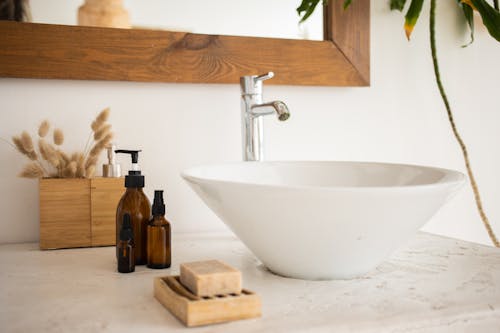
Nothing declared “I read Architectural Digest once” like a vessel sink — you know, that bowl-on-a-counter look that suddenly made your half-bath feel like a spa. This trend surged in the early 2000s as homeowners aimed for boutique-hotel luxury on a budget. These sinks were dramatic and modern, often sitting atop dark wood vanities with brushed-nickel faucets. They looked expensive even when they weren’t, which made them catnip for upwardly mobile suburbanites.
The appeal was partly ergonomic (sort of) but mostly aesthetic. Vessel sinks were a shortcut to “design-forward” when granite countertops and travertine tile were still considered the pinnacle of style. They weren’t the most practical — prone to splashing and awkward cleaning — but they looked like something fancy people installed. In hindsight, they were the bell-bottoms of bathroom fixtures: trendy, eye-catching, and destined to date quickly.
5. A Giant Clock That Doesn’t Work
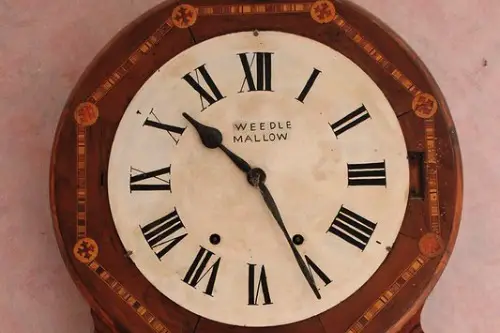
Oversized wall clocks — often rustic, sometimes Roman-numeraled, and frequently non-functional — were a staple of mid-2000s wall decor. These weren’t just timepieces; they were statements. You didn’t buy one to tell time — your phone already did that — but to say, “This home has layers.” Popular in stores like TJ Maxx and Pottery Barn, these clocks gave the illusion of a curated, lived-in space.
They often mimicked old train-station clocks or French café signage, adding a vintage edge to newly built suburban homes. The irony was that half the time, they weren’t even set correctly, if they worked at all. But that wasn’t the point — they were wall jewelry, and their grandeur was the main event. If it had gears exposed? Even better — that meant you were industrial and rustic.
6. A Stack of Coffee Table Books About Wine or Tuscany

It wasn’t really about reading them — it was about having them, prominently displayed and ideally oversized. These books, with titles like The Wines of Italy or Tuscan Living, were purchased less for their contents and more for their hardcovers. They nodded toward a cultured lifestyle of vineyard tours and European summers — even if your last vacation was to Orlando. Restoration Hardware and Barnes & Noble both capitalized on the aesthetic appeal of these aspirational tomes.
It was the era of staging your home for company, and nothing made you look more worldly than a book full of sun-dappled villas. These books anchored a room in fantasy, and in 2005, fantasy was very on-trend. You weren’t just decorating — you were curating your own Mediterranean dreamscape. Even if your idea of Italian cuisine was Olive Garden, your coffee table begged to differ.
7. A Faux-Finished Accent Wall (Bonus if it was Sponge-Painted)
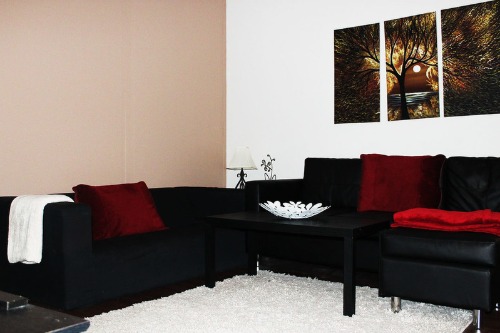
Ah, the accent wall — the trend that let you be “bold” without fully committing to color. Often painted in a terracotta, mustard, or deep burgundy hue, and then given the ol’ sponge, rag, or crackle-glaze treatment, this wall was artisanal, or so we thought. Faux finishing kits were sold in droves at Home Depot, inviting everyone to become their own decorative painter. It was a time-consuming process that almost always looked more “kindergarten project” than “Tuscan villa.”
This trend reflected the 2000s desire to personalize and “warm up” the home after the sterile minimalism of the ’90s. But more than that, it showed you tried, which was the entire ethos of the middle-class aspirational decorator. The effect may have aged poorly, but at the time, it was peak HGTV-core. Bonus points if your chosen shade was called something like “Old World Amber” or “Sahara Dusk.”
8. A Matching Bathroom Accessory Set in Brushed Nickel
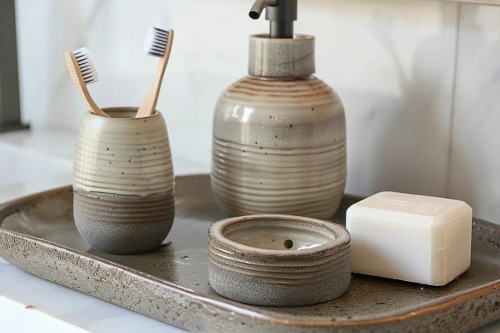
Soap dispenser, toothbrush holder, tissue box cover, wastebasket — all in that sleek brushed nickel or faux-stone finish. These sets were sold in neat four-piece bundles, promising instant coordination and subtle elegance. Bed Bath & Beyond and Target had entire aisles dedicated to them, and they were considered a quick way to “finish” a bathroom. If your accessories matched, it meant you were organized and put-together — a domestic adult.
This wasn’t just about function; it was signaling taste and unity in a space that too often got overlooked. The rise of these sets coincided with the dominance of “spa bathroom” trends, where everything was calming, monochrome, and vaguely Zen. Matching sets gave you that designer-hotel vibe without the designer price tag. And if your soap matched your wastebasket? You were clearly winning at homeownership.
This post 8 Home Accessories That Say “Middle-Class Aspirational Circa 2005” was first published on Greenhouse Black.
